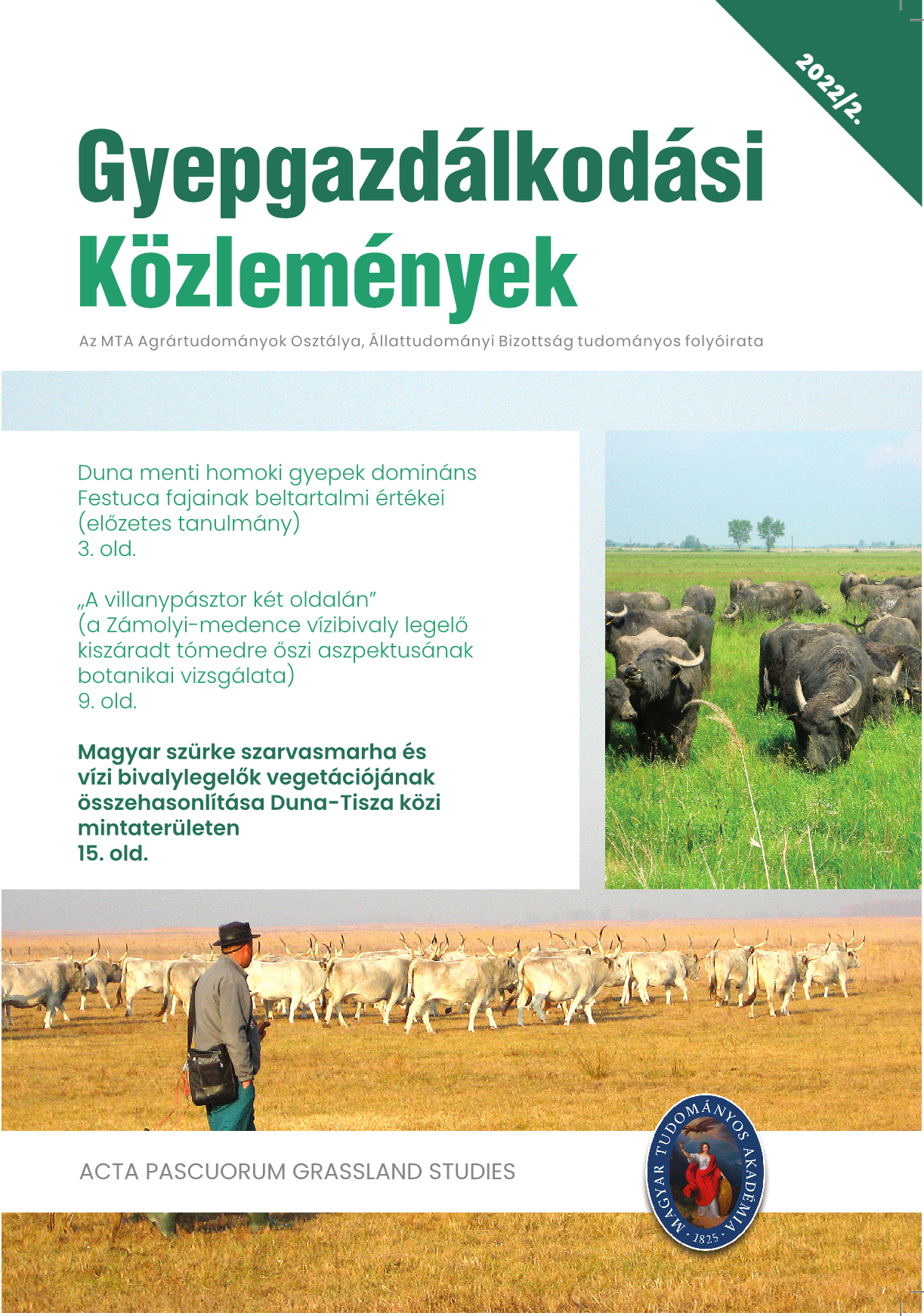Effects of grazing as anthropogenic environmental factor of natural grasslands in the Hungarian Great Plain, near Bugac
Authors
View
Keywords
License
Copyright (c) 2023 Grassland Studies

This work is licensed under a Creative Commons Attribution-NonCommercial-NoDerivatives 4.0 International License.
How To Cite
Abstract
The coenological quadrats were made in 1997, 2005, 2010 and 2021 in a sandy grassland which is used as cattle pasture. The quadrats can be sort in three groups. The first group of quadrats was made close to the cattle pen (Zone A: 0-50 m). The second group was made farther (Zone B: 50-150), where the grazing is not so intensive. The third group contains the quadrats which were made farther than 150m (Zone C). The animals use this area rarely, therefor this part of the pasture is undergrazed (Penksza et al., 2010a). The coenological survey was carried out with 2×2 meter squares, recording the cover value. The species names follow the nomenclature of Király (2009) and Engloner et al. (2001).
The rate of species which indicate degradation is the highest near to the cattle pen (0-50m). But farther than 50m the rate of species which indicates naturalness is higher. Lower nature conservation value can be observed near to the cattle pen. In this area weeds and degradation tolerant species can be found in the highest amount. Their ratio grew in the second zone (50-150m) too in the past few years, but the species which compose the natural vegetation also survived, so the species composition is able for regeneration. With the decreasing of grazing intensity the sample area could meet the requirements of nature conservation.
Data evaluation was made with considering naturalness state in case of habitats; and on the other hand, according to relative ecological factors of occurring species. A significant change in species composition could be detected. Particularly, deterioration of areas could be experienced. These negative processes are extremely heavy inside and near the animal husbandry farm. Even aggressive, invasive plant species occurred. Among dominant grass species, dominance relations and covering rate of disturbance tolerant Cynodon dactylon and Lolium perenne species have increased, caused partly by overgrazing and trampling as well. A new species, Poa humilis, appeared in the zone “A” in 2020, which is a degradation indicator species and tolerates overgrazing and trampling (Penksza and Böcker, 1999/200; Penksza, 2009). Farther from the farm, rate of degradation showed by vegetation has decreased compared to the areas closer to the farm, however, it has increased even on the farther area between the two time periods. During the preparation of management plans for the grasslands, these data should be considered at a higher rate in favor of preserving natural values,

 https://doi.org/10.55725/gygk/2022/20/2/11373
https://doi.org/10.55725/gygk/2022/20/2/11373